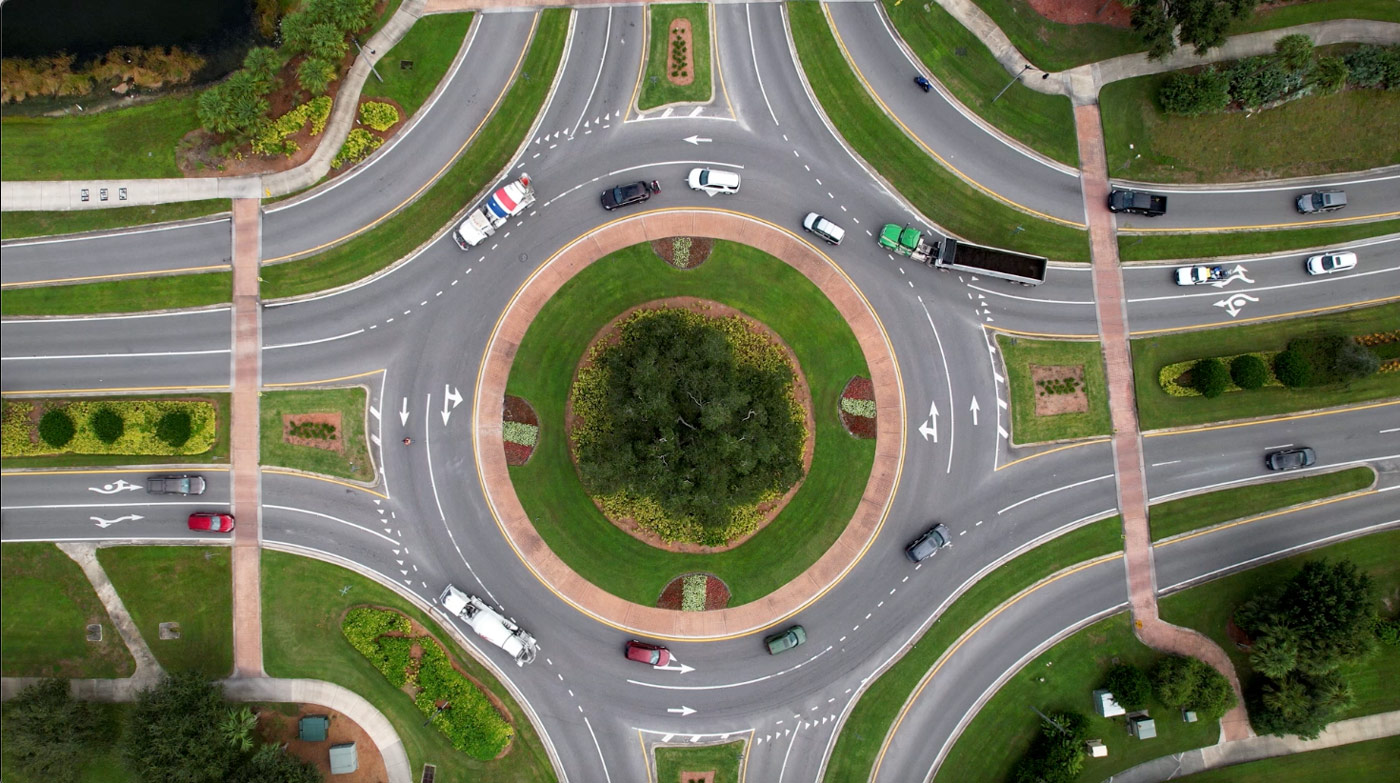Want to learn more about traffic rules or need a refresher course?
Sign up for the AAA Driver Program for a complete driver education course.
 Cars enter and exit traffic circles from all sides in both lanes.
Adobe Stock
Cars enter and exit traffic circles from all sides in both lanes.
Adobe Stock
A road feature often found in Europe many U.S. states have begun to utilize these traffic devices on secondary roadways. According to Lee Rodegerdts of Kittelson & Associates in 2020, there were 9,000 traffic circles nationwide. Wisconsin claims the title of most traffic circles or roundabouts.
Understanding how these traffic features work is crucial for safer and more efficient driving. In this article, we'll explore the ins and outs of traffic circles, helping you learn to navigate them confidently.
Traffic circles are circular roadways designed to manage traffic flow. They serve as alternatives to traditional intersections and come with their own set of rules and advantages. Unlike current intersections with perpendicular crossing lanes, traffic circles are characterized by a circular roadway where vehicles travel counterclockwise around a central island.
While both traffic circles and roundabouts involve circular movement counterclockwise around a center island, the similarities largely end there. Traffic circles can feature stop signs, stop signals or no signs at all. They can also be large, allow vehicles to operate at higher speeds and often require lane changes.
Entry and exit points are placed at four points around the intersection, allowing vehicles to smoothly drive in and out of the circle. The main goal of traffic circles is to facilitate continuous traffic flow, significantly reducing the need for stops and waiting. They are designed with safety in mind, incorporating features like clearly marked lanes and pedestrian crossings.
As you approach a traffic circle, reduce your speed and comply with any posted signals. Enter the traffic circle by yielding to vehicles already inside the circle. Choose your entry lane ahead of time to minimize lane changes when exiting. Maintaining a consistent speed is key to keeping the traffic flow steady and avoiding disruptions. When it's time to exit, clearly signal your intention and yield to pedestrians at crosswalks. Be aware of vehicles approaching from your right to help maintain the order within the circle.
The vehicle already inside the circle has the right of way. Drivers should yield to vehicles inside the circle.
Remember, traffic circles are essentially one-way streets. Make right turns to enter and exit them and always yield to pedestrians when exiting in an outer right lane. Use your right turn signal to indicate your exit and enjoy the benefits of smoother, more efficient traffic flow.